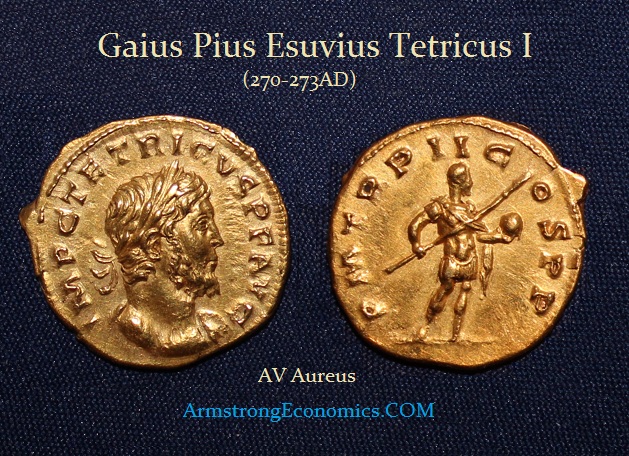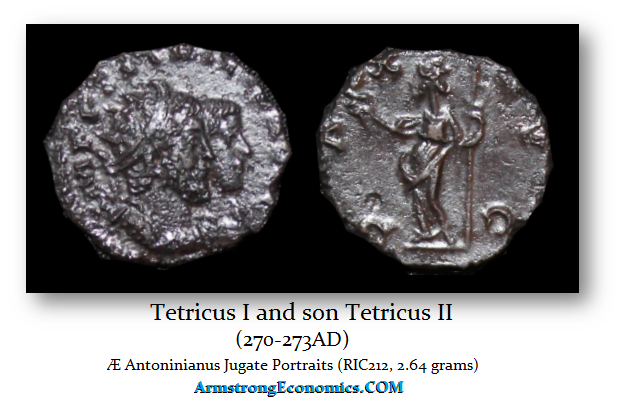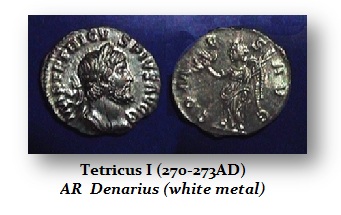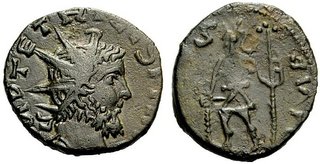TETRICUS I
270 – 273 AD
Last Emperor of the Gallic Empire
Gaius Pius Esuvius Tetricus was the last of the Gallo-Roman Emperors. Tetricus was Governor of Aquitama and had been a Senator from an old noble family. Following the death of Victorinus, Tetricus, through the influence of Victoria, the mother of Victorinus, was proclaimed Emperor. Almost immediately, he raised his son, Tetricus II, to the rank of Caesar.
The Gallo-Roman Empire was in serious trouble. It faced constant difficulties with the barbarians along the Rhine. To make matters worse, Aurelian came to power in Rome and was determined to retake the Gallo-Roman Empire and restore the glory of the past.
The fortunes of the Gallo-Roman Empire declined rapidly under Tetricus. The final blow came in 273 AD when Aurelian invaded Gaul itself. At the battle near Chalons (east of modern-day Paris), Tetricus abandoned his troops and surrendered. The Empire had been pacified, and Aurelian could at last look forward to a splendid triumph in Rome. Aurelian spared the lives of both Tetricus and his son and even gave Tetricus a post in the government of Italy. The ex-Emperor spent the rest of his life in Rome, honored by Aurelian and his successors while his son became a Senator.
Monetary System

Æ Antoninianus
Mint: Vienna (?).
Obverse Legends:
IMP TETRICVS P F AVG
IMP C TETRICVS P F AVG
IMP C C P ESVVIVS TETRICVS AVG
DENOMINATIONS
AU Aureus
Æ Antoninianus
AR White Metal Denarius
(This silver denarius is most likely unique and is perhaps a donative issue struck as gifts for loyal members of his court and/or high-ranking military officials) (see Claudius II and Florianus for a similar issue)
Barbarous Radiates
Barbarous radiates are unofficial counterfeits or imitations of coin types of the Gallo-Roman emperors. A few are nearly full-sized, but most are smaller or much smaller than their prototypes. The majority imitate Tetricus I or Tetricus II, the last Gallo-Roman emperors. Barbarous radiates also exist for Claudius II and even Postumus as well as Victorinus. The numerous small minting operations that produced barbarous radiates were discontinued about 274AD when Aurelian reunited Gaul with the rest of the empire and launched an attack upon the abuses of those in the official mint of Rome who were stealing silver from the government.








